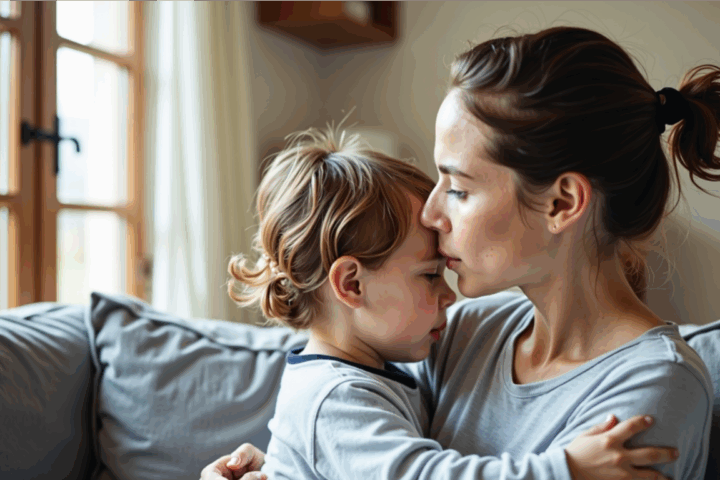Anxiety isn’t just “nerves.” It’s a full-body experience that can hijack your thoughts, flood your nervous system, and make everyday moments feel like emergencies. Whether you’re a student cramming for exams, a therapist seeking resources, or someone who’s simply trying to catch their breath between anxious spirals—this guide is for you.
Let’s build your personal anxiety toolkit. This is not a one-size-fits-all approach but a deeply human, science-rooted path toward inner steadiness.
Section 1: Understanding Anxiety
Before we reach for tools, let’s understand the terrain.
What is anxiety, really?
Anxiety is your body’s survival system on overdrive. It’s rooted in the amygdala, your brain’s smoke detector, and often kicks in whether there’s an actual fire or just burnt toast.
There are many types:
-
Generalized Anxiety Disorder (GAD) – persistent worry without clear cause.
-
Panic Disorder – sudden, intense fear with physical symptoms.
-
Social Anxiety – fear of judgment or embarrassment in social settings.
-
Phobias, PTSD, OCD – each with its own pattern and physiological imprint.
Symptoms can include:
-
Racing thoughts
-
Chest tightness
-
Restlessness or irritability
-
Trouble sleeping or concentrating
-
A sense that something is about to go wrong
Let’s pause here together: You’re not broken. You’re responding to something. Maybe even to everything. And yes—there are tools to help.
Section 2: Types of Anxiety Tools
Anxiety doesn’t respond to logic—it responds to felt safety. That’s why we need tools that meet us where we are: in our hands, our breath, our routines.
2.1 Physical Tools
These grounding tools engage the senses and bring your nervous system back into the moment.
🧤 Examples:
-
Stress balls or therapy putty – Give your hands a job when your brain is looping.
-
Fidget tools – Help focus and self-soothe, especially in social or classroom settings.
-
Weighted blankets – Offer deep pressure that mimics a calming hug, helping regulate your system.
Think of these tools as external co-regulators—a way to tell your body, “We’re safe now.”
2.2 Digital Tools
Your phone can be a portal into panic—or into peace.
📱 Apps That Work:
-
Calm – For guided meditations, sleep stories, and breathing exercises.
-
Headspace – Friendly mindfulness with science-backed lessons.
-
MindShift CBT – Focuses on CBT strategies for anxiety management.
-
Insight Timer – Free access to thousands of meditations, plus calming music.
🖥️ Online Resources:
-
Therapist Aid – Free worksheets, psychoeducation tools, and mindfulness guides.
-
Anxiety Canada – Rich in evidence-based strategies and resources.
These tools don’t replace therapy—but they offer support between sessions.
2.3 Therapeutic Techniques
Here’s where we start talking to the parts of you that are trying to protect you.
🌬️ Breathing Exercises:
-
4-7-8 Breathing: Inhale for 4, hold for 7, exhale for 8. It slows the heart rate and taps into your parasympathetic nervous system.
-
Box Breathing: Inhale–4, hold–4, exhale–4, hold–4. Often used by first responders—and now, you.
📓 Journaling Prompts:
-
“What is my anxiety trying to tell me right now?”
-
“What evidence do I have that I can handle this?”
-
“What might my inner child need to hear today?”
“Your protector acts like a bodyguard who doesn’t realize the threat has passed.” – Let’s thank it, then update its script.
Section 3: Effective Strategies for Anxiety Management
Tools are great, but strategies create sustainable calm. These are about building nervous system resilience.
🧘♀️ Mindfulness & Meditation
-
Practicing mindfulness can literally shrink the amygdala and strengthen the prefrontal cortex (your “calm command center”).
-
Even 5 minutes a day rewires your brain’s stress response.
-
Try Tara Brach’s meditations or Insight Timer’s body scans.
🧠 CBT (Cognitive Behavioral Therapy) Techniques
-
Learn to identify “thought traps” like catastrophizing or black-and-white thinking.
-
Use CBT worksheets (like those on Therapist Aid) to track triggers, challenge beliefs, and reframe thoughts.
“It’s not about being ‘too much’—it’s about unmet needs.” CBT helps us meet them differently.
🥦 Lifestyle Changes
-
Nutrition: Stabilize blood sugar = stabilize mood. Avoid caffeine spikes and sugar crashes.
-
Exercise: Just 30 minutes of walking can reduce anxiety symptoms.
-
Sleep: Think of it as mental housekeeping. Prioritize it like a therapy session.
Section 4: Building Your Anxiety Toolkit
Now, let’s get tangible. Your anxiety toolkit is like an emergency preparedness kit—but for your heart and brain.
🧰 Step-by-Step to Building Your Toolkit:
-
Know your patterns
What time of day is anxiety loudest? What situations trigger it? -
Curate tools for each state
-
Physical: Stress ball, fidget ring, lavender oil.
-
Digital: Calm app, music playlist, CBT journal.
-
Emotional: Affirmations, grounding scripts, voice memos from a calm you.
-
-
Store it accessibly
-
In a zip pouch, a desk drawer, a notes app, or even a “calm kit” box on your nightstand.
-
📝 Toolkit Template:
| Category | Tool Example | When to Use |
|---|---|---|
| Physical | Therapy putty | During meetings or lectures |
| Digital | Calm app meditation | Before sleep or after panic |
| Emotional | Affirmation card deck | During spirals or self-doubt |
| Sensory | Essential oil rollerball | Public places or grounding |
Your toolkit isn’t a sign of weakness. It’s proof that you’re taking care of the parts of you that once felt alone in the storm.
Section 5: Additional Resources
Support doesn’t end here. Let’s expand your map.
📱 Recommended Apps:
📚 Worksheets & Printables:
🔗 Mental Health Support Networks:
-
NAMI HelpLine – National Alliance on Mental Illness.
-
Mental Health America – Screenings, resources, advocacy.
🧭 Conclusion: You Get to Take Up Space—Even in Your Healing
Let’s be real: anxiety isn’t something we “fix.” It’s something we befriend. With tools, strategies, and compassionate support, we learn how to move with it—not against it.
And you? You’re not fragile. You’re feeling. And that’s its own kind of strength.
“Your nervous system is sensing threat, even if your mind knows you’re safe.”
Let’s teach it safety, one breath, one tool, one tender step at a time.
🔁 Call to Action
What’s in your anxiety toolkit?
🌱 Share your favorite tools or stories in the comments.
🧠 Subscribe for weekly mental health resources and insights.
📞 And if anxiety is interfering with your daily life, consider reaching out for a free 30-minute consultation.
You might also like Understanding Common Anxiety Disorders .











